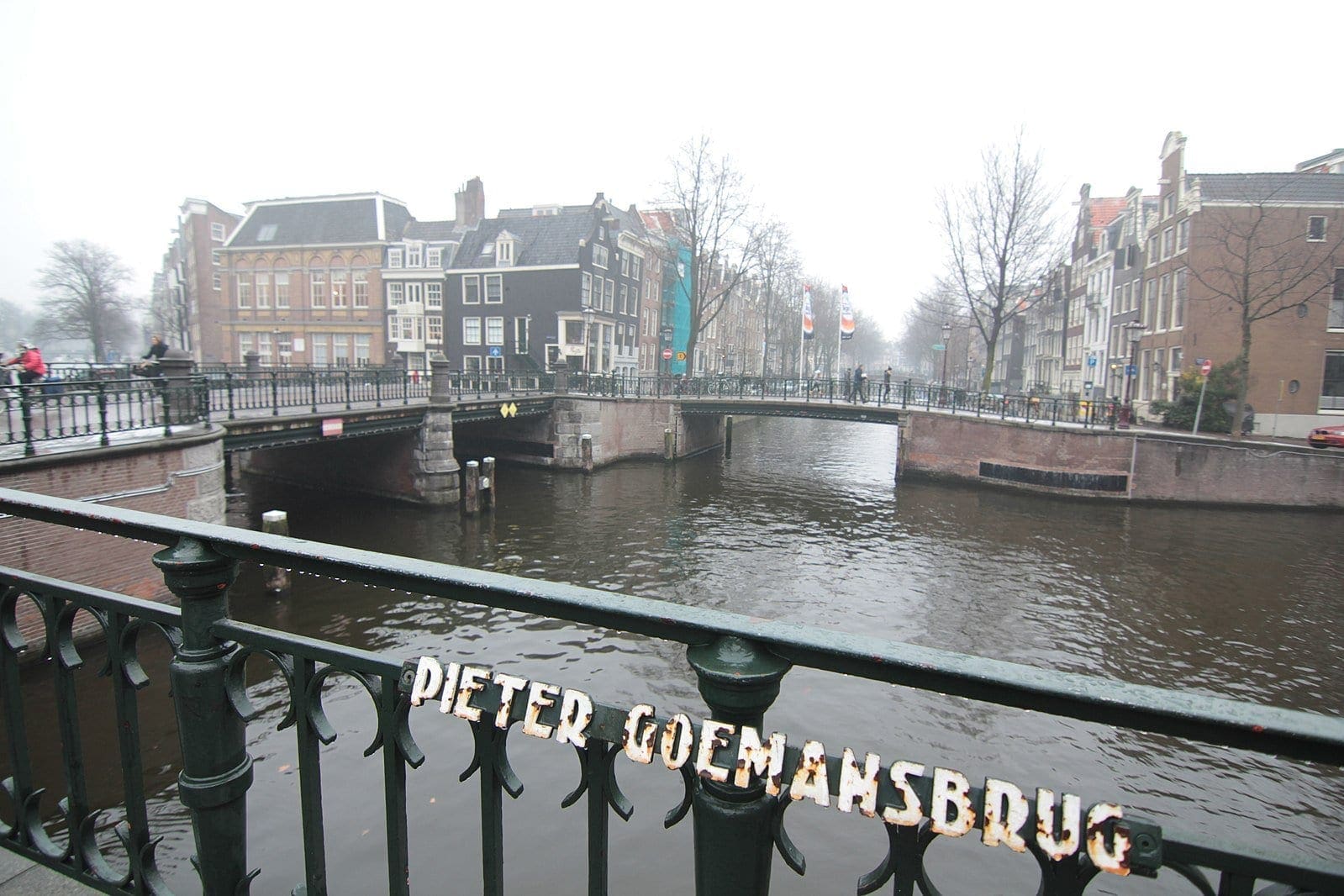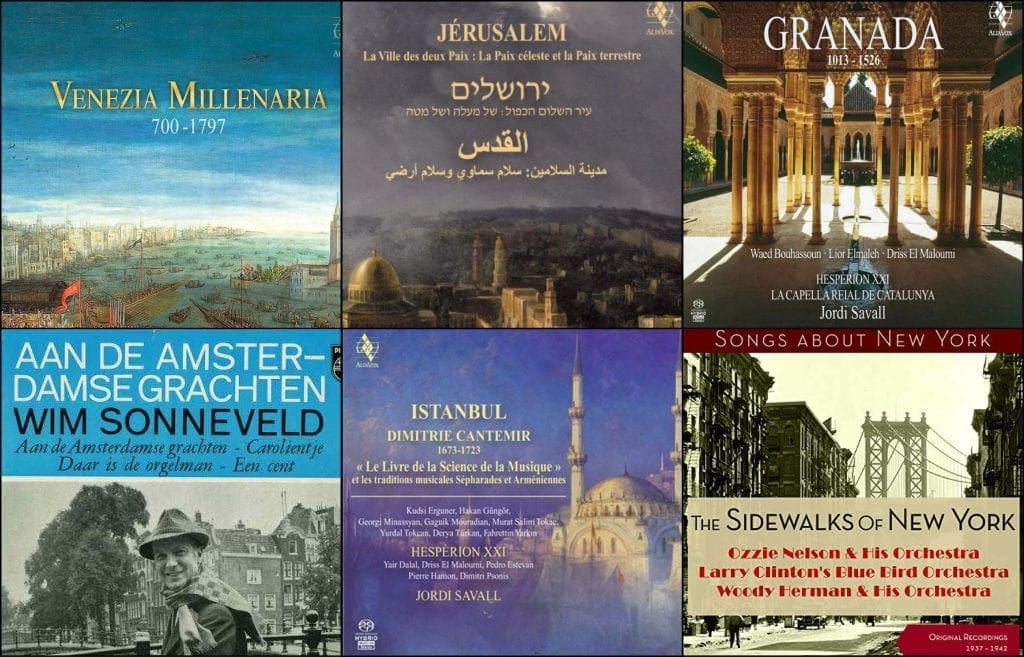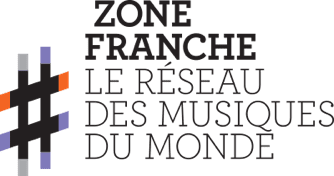What can music tell us about cities? Can musical city portraits be a starting point to reflect on ways in which music represents cities and contributes to the creation of shared memories associating places and music? This article is an invitation to explore different examples of musical city portraits.
Unlike literary and visual representations of the city, music portrayals might appear more indirect, fragmentary, open-ended, especially with regards to non-vocal music or music with lyrics in foreign languages. Nevertheless, they still offer a unique perspective to dive into the musical psychogeography of different cities and explore the rich tradition that merges music with other cultural spheres. Music allows us to have a glimpse at the soul of cities and discover facets that often remain invisible and unknown to foreigners due to language barriers or lack of sufficient knowledge about the local cultural context.
Music has often connections to cities and specific locations, but to perceive and appreciate references that, for example, songs of Okudzhava make to Arbat street in Moscow or Chava Flores, the unofficial urban folklorist of Mexico City, makes to La Merced neighbourhood, or the poetry of Roberto Murolos’ Neapolitan songs in local dialect, one would need to be familiar both with Russian, Spanish and Neapolitan languages and the city places they chronicled in their songs. Fortunately, music doesn’t require us to know this in order to enjoy it. But when we do make the connections, it stimulates our curiosity and offers a privileged access to the sense of place embedded in urban history, language and culture. Namely, to how locals have construed and still share living memories that associate songs, times and places. As Proust observed, the real voyage of discovery consists not in seeking new landscapes, but in having new eyes, or in this case in widening the perspective of our “hearing vision”.
Булат Окуджава - Песенка об Арбате
Bulat Okudzhava - Song of the Arbat street
Some places such as the canals of Amsterdam are so visually iconic that we forget that they also have an invisible history. The special place they hold in the hearts of Amsterdamers was musically captured by Pieter Goemans in an ode to the canals that has become one of the unofficial city anthems.
The song tells of childhood memories, the longing to return to the city after long travels, the changes brought about by the passing of time, but above all it sings the eternal Amsterdam with a love declaration to the city. It’s performance at the end of the traditional Open air Prinsengracht Concert in the canals with an audience watching and listening from boats, is one of the musical city-highlights every year. The bridge in the song was memorialized with a plaque and later named after him while his ashes were spread over the Prinsengracht canal.

Wim Sonneveld - P. Goemans - Aan de Amsterdamse Grachten | Prinsengrachtconcert 2013
Cities such as New York have, unsurprisingly, been source of inspiration for thousands of songs which have travelled across the world. The centrality of New York in music is not only due to its cultural vitality and capacity to attract generation after generation of musicians but also because of the city’s key role in the history of the music industry. After all, New York was where the phonograph was invented and where mythic places such as Tin Pan Alley, Broadway, Harlem among many others gave birth to modern American music.
It would be almost impossible to list the songs connected to New York, when alone a place like Central park has inspired artists as diverse as John Coltrane, Nina Simone and Chick Corea. Other city songs don’t praise iconic places and historic landmarks but rather its people and the unique city life experience. The music and lyrics of On the sidewalks of New York both sing and represent a nostalgia of the old New York. It has been performed and adapted by numerous artists and is also considered by many as the unofficial anthem of the city.
Nat King Cole - On The Sidewalks Of New York
Music doesn’t use exclusively the city itself as a source of inspiration, it also takes and amplifies other urban imaginaries from literature, visual arts, cinema, etc., as a topic of music representation of city life. In the documentary Helsinki Forever, Peter von Bagh created a city symphony that poignantly brings to life a century of archival footage in counterpoint to paintings, movie sequences and a beautiful and diverse soundtrack of the city that invites the foreigner to discover decades of Finnish classics that are little known outside the country. These include a wide range of genres such as Finnish jazz, pop, punk rock, classic and film music with excerpts from Ture Ara, George de Godzinsky, Einar Englund and the Harmony Sisters. It also includes songs from Olavi Virta, the king of Finnish Tango, a unique cultural phenomenon unto itself, that illustrates how foreign musical influences are transformed and integrated into a local music tradition that grew to become one of the most popular music forms in Finland.
Olavi Virta - Unforgettable Home (Tango Frostbite)
A unique and ambitious project that brings music into dialogue with the city and its representations from multiple angles are Jordi Savall’s recordings of Istanbul, Jerusalem, Granada and Venice. Initially known for his historical performances with original instruments of early western music, these grand historical projects constitute a rich collection of musical frescoes. They are not only aesthetically and musically fascinating but their multilingual documentation, participation of musicians from Israel, Europe and the Arab world, recreate historic atmospheres and offer a unique multi-layered city-music experience.
These cities have a complex religious, ethnic, linguistic history and the narratives chosen along with timelines illustrate the cultural crossings between the west and the orient. These are punctuated by text readings, dances, ceremonial and religious music, evoking such historical moments as the birth of Venice, the 4th Crusade, the Fall of Constantinople, the Battle of Lepanto, and of Jerusalem as a Jewish, Christian, Arab and Ottoman city. In Istanbul, the music from Dimitrie Cantemir, a Moldavian 18th century polymath whose life and music represents a striking example of East-West connections and cultural crossings. Each of these recordings focus on a city but together they complete one another in their portrayal of millennial Mediterranean cities and cultures, showcasing a true intercultural dialogue, bridging differences and wars, where a common humanity across centuries and cultures is brought to life in music.
ISTANBUL
Der makām - ı Hüseynī Sakīl - i Ağa Rıżā (Mss. D. Cantemir 89) · Jordi Savall
GRANADA
Invocación Qamti be - Ishon Layla · Jordi Savall
Villancico: Aquella mora garrida - Gabriel, Cancionero de Palacio (CMP 254)
The music heritage of a city does not only allow us to travel the world musically, but also can help us connect and relate to the city and its history in new and meaningful ways. It’s an invitation to rediscover places through music but also new music through places we thought we knew. Music is a powerful recipient of histories and memories. The resonances and interplay between music and other city representations can enrich our experience of music, cities and ourselves.
In the “The Poets’ Soul”, a song about songs, Charles Trenet reveals us a musical secret: The poetry and the memory of a city can remain alive through music as long as we continue to sing it, even after their authors are forgotten.
Long, long, long
After the poets have disappeared
Their songs flow still through the streets.
The crowd sings them, a little distracted,
Unaware of the author’s name,
Not knowing for whom his heart beat.
Sometimes one changes a word, a phrase,
And when one has run out of ideas
One goes “La la la, la la lay.”
At the end, the evocative power of music is such that even what seems to be forgotten, remains often present in music, waiting to be resurrected by us.
By the same author :
« For a new awareness of music listening »
« Narcocorridos : A musical tradition perverted by violence ? »
« Modern urban troubadours : Beggars or buskers ? »


